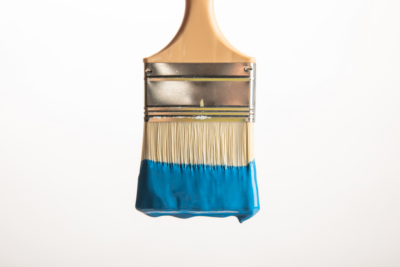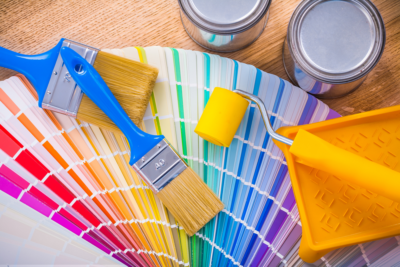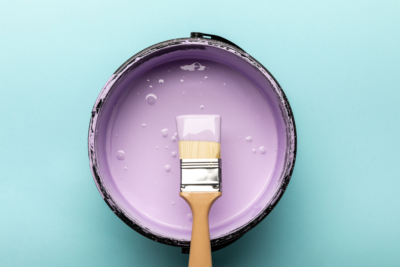If you’re making use of milk paint for your projects, then you’re already ahead of the game with a great, safe, non-toxic product that often doesn’t require the same amount of prep work as latex or oil-based paint. But once you’ve got the right paint, you need to make sure you get the right tools to use it. Your paintbrush is an important piece of this puzzle, and we’ve got some tips to make sure you get the most out of your painting experience.
Don’t Skimp
If you’re going to be doing a lot of painting, then get a quality brush that is within your budget. A good paintbrush will be there for many years and many projects. Poor paintbrushes mean regularly needing to buy replacements. It may seem like an extra expense, but if you know you’ll be doing more painting in the future, a good paintbrush will save you both time and money.
Know Your Cleaner
When you’re cleaning your paintbrushes, always use the right solvent for the situation. Sometimes, plain old water is enough, and you don’t need to spend money on paint thinner. Other times, you may need a citrus solvent or a lye soap to do the job. Figure this out in advance. Whatever the case is, always ensure that you’re using the right cleaner or solvent to do the job with your paintbrush. Otherwise, you may end up not cleaning the paint efficiently or, worse yet, damaging your brush.
Wash The Brush Properly
 A good cleaner or solvent is important to clean and not let the paint dry in your paintbrushes. But this isn’t a matter of just letting a brush sit in a jar, or soak. Apply the cleaner or solvent to your brush, and then actively clean it during this period.
A good cleaner or solvent is important to clean and not let the paint dry in your paintbrushes. But this isn’t a matter of just letting a brush sit in a jar, or soak. Apply the cleaner or solvent to your brush, and then actively clean it during this period.
A rubber band can also aid in cleaning paintbrushes and even foam brushes. Stretch the band across a paint can or similar container, creating a scraper of sorts. After rinsing your paintbrush in water or solvent, drag it against the rubber band to help remove the excess paint, keeping the bristles cleaner and preserving their shape.
Take the time to actively clean out the bristles, and work the cleaner or solvent in. You only need to soak a brush if the paint on the brush has already dried. Once this step is done, soap and water can finish off the rest including the wood handle.
Use Your Hands Not A Surface
There may be a temptation to simply “squish” a brush on the bottom of your sink to squeeze out paint. Resist the impulse and give it a proper cleaning with your hands, massaging soap into the bristles and giving it a proper rinse. This is a much more gentle way to clean the bristle without shortening their lifespan.
Also make sure to work the soap up into the furrel, the metal band that holds the bristles. Paint can naturally accumulate in this hard to reach area as well. Make sure everything is thoroughly, properly rinsed.
Dry The Brush Carefully
 Once rinsed out, shake the excess water from your brush, and then wrap a thin rag, paper towel or cloth around the bristles with a string. Make sure the bottom of the bristles are still exposed, so the water can drip out. Hang the brush, with the bristles pointing downwards to let gravity give you a helping hand in getting rid of excess water.
Once rinsed out, shake the excess water from your brush, and then wrap a thin rag, paper towel or cloth around the bristles with a string. Make sure the bottom of the bristles are still exposed, so the water can drip out. Hang the brush, with the bristles pointing downwards to let gravity give you a helping hand in getting rid of excess water.
By taking the time to clean and dry your brush properly, you’ll have a quality tool that is ready to go for your next painting project. A good paintbrush is one of your best friends and using a quality paintbrush with milk paint ensures a smooth, pleasing, evenly applied paint job.
For more information, visit Real Milk Paint online, or call 800-339-9748




